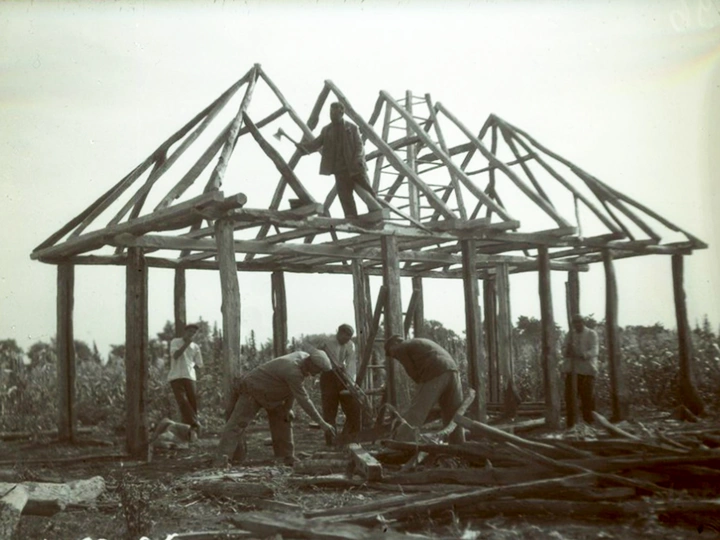Atlas Vernacular Hardcore

Herbert Justnik
Michał Muravski
I am Bogdana Kosmina, an architect, researcher, and artist. Born in 1990 in Kyiv, I graduated from the Kyiv National Academy of Fine Arts and Architecture (2013) and earned a Master’s from ENSA Nantes (2015). My multidisciplinary practice explores intersections of culture, heritage, and technology through collaborations with historians, ethnologists, human rights activists, and artists. Since 2017, I have been part of HUDRADA curatorial group; since 2018, collaborating with METASITU on new spatial pedagogies; since 2019, co-founder of “Dzherelo” art pavillion. Notable projects include renovation of Dovzhenko Center—the largest state film archive—and Shcherbenko Art Center. In 2020 my work was featured at Tbilisi Architecture Biennial (“What Do We Have In Common”). At Venice Biennale editions, I realized installations such as “Piazza Ucrania” (59th), “March On” (18th Architectural). In 2024-25 I reconstructed Ukrainian avant-garde Fedir Tetianych’s Biotechnosphere for Urbane Künste Ruhr/Spandau Citadel Berlin. I curated the program at Warsaw Under Construction 16 at the Museum of Modern Art in Warsaw. Since russia's full-scale invasion, I've focused on revealing "The Atlas of Folk Ukrainian Housing 19-20c."—based on fifty years’ research by three generations of my family. In 2025 co-curator of the Ukrainian pavilion at the 19th Venice architectural biennale.
My proposal emerges from the urgent context of war and cultural erasure, shaped by my experience as both architect and artist. The full-scale russian invasion compelled me to re-examine my family’s fifty-year legacy—“The Atlas of Ukrainian Traditional Housing”—not only as a historical resource but also as an active tool for contemporary resilience. In 2023, recognizing its fragility, I began scanning archival materials—maps, drawings, photographs—and exploring their architectural potential. Early experiments included a public space installation concept with Edouardo Cassina (Metasitu). My MuseumsQuartier Vienna residency connected architecture and folklore, deepening how spatial culture shapes memory; this led to institutional collaboration with Volkskundemuseum Vienna. By 2025—with museum support—I will oversee comprehensive digitalization while developing exchange programs/public events in partnership with LINA’s network.
As co-curator (with Michał Murawski) of Ukraine’s National Pavilion at 19th Venice Biennale (“DAKH: Vernacular Hardcore”), we juxtapose the "heritage vernacular" of traditional Ukrainian village housing with the "emergency vernacular" of self-organized reconstruction carried out under wartime conditions. This work shows repair must begin amid devastation—drawing on grassroots intelligence for future resistance—and invites NGOs like Livyj Bereh/KHARPP into dialogue.
I see great value in exploring new venues for the installation; joining LINA can foster fresh institutional partnerships and keep this traveling project dynamic. While DAKH’s core stays the same, its six thematic tables should adapt for collective research and evolving narratives. Looking ahead, LINA offers a platform to co-build out a Vernacular-Mega-Atlas—a planetary critique engaging practitioners globally around the ethics of horizontal reconstruction. I aim to build lasting partnerships for an expanded publication.